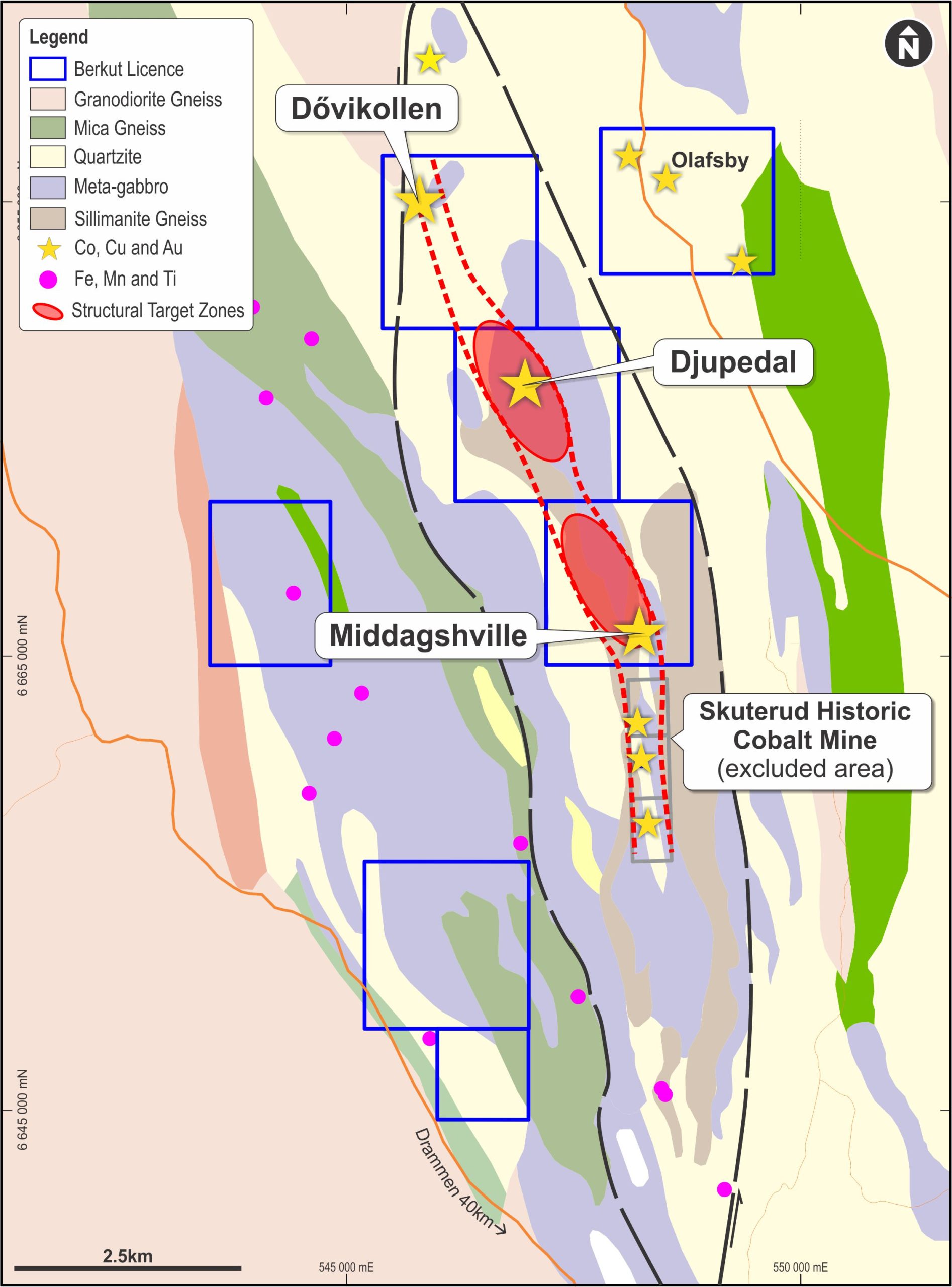- Major historical cobalt producing region
- Extensive historical workings over a NNW strike length of over 9 kilometres
- 100% owned, granted licences over 1,250 hectares
- Majority of strike extent covered by Berkut (Kobald) tenure
- First modern exploration in the area
The Skuterud Project consists of four granted licences covering approximately 1,250 hectares in southern Norway, within 100km of the Oslo port. The area contains one of the most famous, historic cobalt mines in the world, which lends it name to one of the main cobalt minerals, Skutterudite. The Project was mined throughout the 18th and 19th Centuries, during which time it supplied much of the world’s cobalt, employed thousands of people, and the operator was reported to be the most profitable company in Norway.
The cobalt occurrences are related to meta-sedimentary, sulphide-rich schist zone, so-called ‘fahlbands’. The most extensive sulphide-rich zone has a length of 12km along strike, and is up to 100-200m wide. The cobalt mineralisation is, to a large degree, characterised by impregnation of cobaltite, glaucodote, safflorite and skutterudite, which partly occur as enrichments in quartz-rich zones and lenses.
The vast majority of the strike of old workings remain open and untested by modern exploration methods and Berkut has secured granted exploration licences over the majority of the strike extent of the old workings. In addition, Berkut is exploring further opportunities in the Skutterud region.


